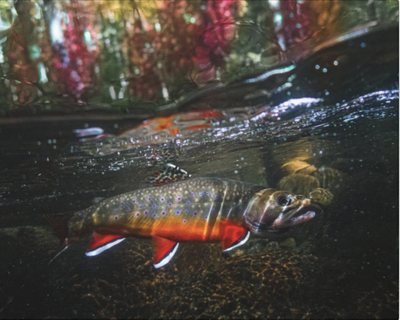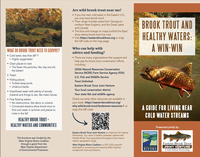About Wild Brook Trout
Brook trout are resilient. The have thrived in the cold waters of the Appalachian mountains for several million years, and longer in areas that glaciers did not touch. In the deep in the mountain hollows protected by towering oak and pine and impenetrable rhododendron thickets, the southern Appalachian brook trout - known to be genetically distinct from its northern counterparts, is found in the tiniest of headwater tributaries, in what anglers call 'small water'. Farther north, brook trout swim in ponds, lakes, and coastal rivers, and they take on different sizes and colors in these different habitats. Scientists and managers are constantly unfolding more facets of its life history, that is - how it grows and reproduces, where it lives, what it eats, and what strategies it uses to stay alive in diverse habitats. In Maine, biologists recently discovered brook trout spawning under the cover of lake ice.
"The ultimate prize for us is fishable populations of wild brook trout. It's the reason we came together and is the reason we are working so hard". - Nat Gillespie, EBTJV Chairman 2015-2022.
We at Eastern Brook Trout Joint Venture want to ensure that our children's grandchildren will have the excitement of catching a wild brook trout.
Follow to read more about brook trout biology.
Are you a landowner? See how you can be a great steward of the rivers and streams.
Request a copy of our brochure on brook trout and healthy waters
Do a brook trout paint-by-numbers, from the Pennsylvania Parks and Forest Foundation







